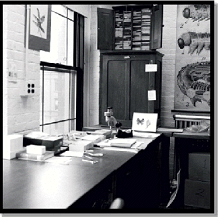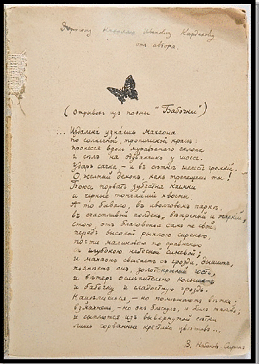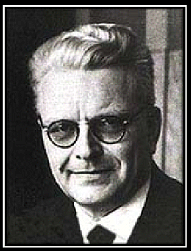|
Banknotes and Butterflies, By Dmitriy Litvak (IBNS LM-204) Baltic countries 1769 - 1950" (Katalog der Geldscheine von Russland und der Baltischen Staaten 1769-1950): the author of this unique catalog, still considered the "bible" for Russian and Baltic State collectors throughout the whole world, was Nikolai Kardakov.
Kardakov's father, Ivan Kardakov, came from peasants of the Kotelnichsky area of the Vyatka province, in Russia. He had two brothers: Ilia and Peter. All of them had large families. In 1914 Ivan Kardakov created "Ivan Kardakov and Sons, trading house in Vyatka” and after opened the first mall in Russia. The store located in this original building still called "Kardakovsky". Their mother, Lyudmila Senilova,
was the daughter of notable Vyatka merchant. In the Kardakov family there
were six children, sons Nicolai, Arkady, Andrew and daughters Vera, Nina
and Julia. entomology journey Nikolai collected butterflies in Ceylon, Indochina, Altai region, and in the Far East of Russia. However, all this time, the main occupation for it as the oldest son, there was a participation in family businesses. He was a manager of “Kardakovsky” store. His sister Vera, having married to merchant Girbasov (Vladivostok), by then, lived there six years. Therefore all travels, especially to the Far East, were always bound to family business. How he trapped to the Far East during the civil war, Nikolai Kardakov explained in 1946 to the Soviet commandant's office of Berlin. It appears, he accompanied the Russian Military Academy (General Staff), and since fall 1919 till May, 1920 was recruited by "Kolchak's agents" in Vladivostok where worked as the hunter, clerk and the meteorologist. Even there he always remained to be an entomologist. V. Nabokov: Letter to his wife 8-6-1926 "Kardakov told me a strange story about time carried out by it in the Ussurijsk Territory, during expedition on entomology. The attitude of peasants, towards him as entomologist, were nasty (they even tried a murder attempt) for two reasons. First: One-time he asked boys to deliver to him bugs, and paid on 2 kopeks apiece but local men spoke: Look at him, the "doctor". He is buying by penny, and later will sell by one thousand rubles… Once he asked to find very scarce bug, that usually living in a pile of logs. Boys founded a bug, but all logs in the village were scattered. After that men decided to kill "doctor". And secondly: all considered him as a real doctor, and it was a line of patients and pregnant women around his house. He tried to explain that he is not a real doctor, and doesn’t know how to treat, but nobody trusted him, and considered that it only for rage and pride. Therefore, soon [note of the author: with the brother] they were necessary to leave." In the early twenties he became a collector of paper banknotes (according to some data the trigger was the founding of treasure with bunch of imperial paper banknotes during one of entomological expeditions), and on this matters got acquainted with Lev Jolson. Lev Jolson (1891, Vilnius - 8.04.1938, Moscow), lived and worked at this time in Vladivostok. Jolson, the largest Russian, and the Soviet paper money collector (his collection in 1925 consist of 7000 copies) acquainted Kardakov with Chuchin, the founder of the “Organization of the Representative on Philately and Bonds in the USSR” (CFA). Sale of stamps and bonds collection abroad was a major task of this organization. At the end of the 1922, Kardakov was sent to Berlin, as official representative of CFA in Germany. In 1923, in Berlin, together with Jolson he issued the brochure about the banknotes issued in the territory of Russia during the Civil War. Then he began to send articles to the Soviet magazines: "The Soviet collector"(Moscow) and "The monthly bulletin of the Southern joint office of the Soviet Philatelic Association"(Kharkov). When, in 1930, in Yugoslavia the magazine of a "Rossica Society "first time was printed, he began to contribute articles, under the pseudonym "N. Rosberg"- which is deciphered as "The Russian Berliner" (by the place of residence of Kardakov in Germany). In 1962, he was elected as "Rossica" Honorary Member, and since then, he signed all messages by his real name. Since the end of the 20th, Kardakov began to cooperate, and since 1934 began to manage subdivision at the “German Entomological Institute”. In 1943, because of bombings the institute was evacuated, and Kardakov accepted to work in the “Zoological museum of university” in Berlin, where he continues to work till 1951. In 1951-1953 his scientific works were awarded multiple times by the German Academy of Sciences, and in 1956 he was nominated to the Nobel Prize. The portrait of professor Kardakov was painted in 1955, for “American collection of entomologists of the world”, and since located in Harvard University. His collections dispersed and stored in scientific collections in many countries, such as: USA, Germany, Japan, India, and Russia. Nikolai Kardakoff, business card, German Entomological Institute (1934-1943) (court  esy of Alexander Kuznetsov,
Moscow)
All this time, at home, on the typewriter with two fonts: German and
Russian, he
manually typed his main work: "The catalog of banknotes of Russia and the
Baltic
countries of 1769-1950". This catalog was issued in 1953, and since
remains, the
best systemic catalog for paper money issues in Russia. This can be
confirmed by
numerous privately made reprinting.
Besides his main work, he wrote articles: "Ataman Shkuro's money", "Bank
Notes Issued by “Green’s” in the Black Sea Province", "Bank notes of the
railroads in the
Caucasus", "Bank notes of Tersk Cossack army", "Bank notes of the Kuban
regional government", "An emission of the first Crimean government", "Bank
Notes of the Main command armed forces in the south of Russia", and with
Lev
Jolson he published the catalog: "The list of the bank notes let out and
plying in
the territory of the former Russian Empire in days of war and revolution
of 1914-1923". esy of Alexander Kuznetsov,
Moscow)
All this time, at home, on the typewriter with two fonts: German and
Russian, he
manually typed his main work: "The catalog of banknotes of Russia and the
Baltic
countries of 1769-1950". This catalog was issued in 1953, and since
remains, the
best systemic catalog for paper money issues in Russia. This can be
confirmed by
numerous privately made reprinting.
Besides his main work, he wrote articles: "Ataman Shkuro's money", "Bank
Notes Issued by “Green’s” in the Black Sea Province", "Bank notes of the
railroads in the
Caucasus", "Bank notes of Tersk Cossack army", "Bank notes of the Kuban
regional government", "An emission of the first Crimean government", "Bank
Notes of the Main command armed forces in the south of Russia", and with
Lev
Jolson he published the catalog: "The list of the bank notes let out and
plying in
the territory of the former Russian Empire in days of war and revolution
of 1914-1923".To the majority of peoples Vladimir Nabokov known as the writer. But personally for him, literature was never on the first place. Nabokov told about it: "I devoted all my life to "catching of butterflies". He was the professional entomologist-systematic and considered Kardakov as his "entomological friend."  Nabokov's office in the Museum of Zoology of
the Harvard university (1941-48).
There is a documentary confirmation, in the form of simultaneous sign in
the
book of visitors in German Entomological Institute, what exactly on April
11, 1926
Kardakov and Nabokov were met for the first time.
The copy of the first edition of the novel V. Sirin “King, Queen, Knave”,
Berlin,
«Slovo», 1928 was found by Terry Myers in Berkley’s antique bookshop. The
autograph on the title page was given by the author to Nikolai Kardakov, a
friend
of Nabokov and a fellow entomologist.
On the title page of the book Nabokov wrote a fragment from the poem
“Butterflies”. Twenty-two lines, written by black ink, with the picture of
butterfly
added from above. Even his wife, Vera Nabokov, knew nothing about the
poem.
Apparently, Nabokov never finished the poem in full, and this is the only
existing
copy of the excerpt. Nabokov's office in the Museum of Zoology of
the Harvard university (1941-48).
There is a documentary confirmation, in the form of simultaneous sign in
the
book of visitors in German Entomological Institute, what exactly on April
11, 1926
Kardakov and Nabokov were met for the first time.
The copy of the first edition of the novel V. Sirin “King, Queen, Knave”,
Berlin,
«Slovo», 1928 was found by Terry Myers in Berkley’s antique bookshop. The
autograph on the title page was given by the author to Nikolai Kardakov, a
friend
of Nabokov and a fellow entomologist.
On the title page of the book Nabokov wrote a fragment from the poem
“Butterflies”. Twenty-two lines, written by black ink, with the picture of
butterfly
added from above. Even his wife, Vera Nabokov, knew nothing about the
poem.
Apparently, Nabokov never finished the poem in full, and this is the only
existing
copy of the excerpt.“Butterflies” Courtesy of Terry Myers from Terry Myers's letter (2000): "... The packag  e from Germany just arrived, with pictures of Kardakoff and
Moltrekht. I can hardly believe that now I know by sight the person to
whom
Nabokov devoted the poem "Butterflies” by Nikolai Kardakoff.
At the beginning of article, I mentioned how Kardakov hobby probably
began.
I think that this history has "Far East" roots. e from Germany just arrived, with pictures of Kardakoff and
Moltrekht. I can hardly believe that now I know by sight the person to
whom
Nabokov devoted the poem "Butterflies” by Nikolai Kardakoff.
At the beginning of article, I mentioned how Kardakov hobby probably
began.
I think that this history has "Far East" roots.From memoirs of the niece of Kardakov (Alexey's daughter, the younger brother of Nikolai): After the war, in Vladivostok, I was found by Konstantin Arkadievich Kardakov, the diplomat, the son of another Nikolai brother. Happening abroad, he visited uncle Nikolai in Berlin. He spoke to Eugenia Alekseevna: "well, we were detached, with a such of this particular last name you will be forever our relative". Leaving back to work, he asked in behalf of uncle Nikolai, to borrow the first editions of few Arsenyev books, were kept in a family from twentieth. Soon they were returned by mail, but all of them had new covers. Explanations did not follow. We assume that the solution of this incident is bound to a treasure of the banknotes stored in such of original matter. Also, I want to aware collectors, about recently and very widespread, but senseless gossip about "origin" of a collection of Kardakov. Below, I’ll cite a post by Alex Rubinov, dated 11-28-2011, and posted on www.fox-notes.ru “Recently I received the 5th issue of "Petersburg Collector". On a page 8, I saw the article "Without a limitation period" written by A. Melnikov. For those who did not read it, I will formulate an essence in one sentence: "In 1943 the chief of Nazi Police of Bobruisk, under the threat of punishment, forced collector Stasenko to leave the considerable portion of his collection of bonds. Later, it seemed in possession of Nikolai Kardakov." I was surprised by kind responses of some notable numismatist, including founders of the “Soyuz Bonistov”. Apparently, as a starting point for "research", the surname of the chief of Nazi Police of Bobruisk was taken: "he was Kardakov's nephew". Actually, the author talking about colonel Vasily Kardakov, who was born in 1903 in Tiflis, one of the closest associates of general Vlasow. His family, and place of his birth, are not crossed in any way with Nikolai Kardakov's family and his closest relatives. The history with Stasenko's collection is based only on the story of the collector. Ryabchenko stated it, in other interpretation. He was mentioned the place as Enakiyevo (Ukraine), but Bobruisk. Typical example of the story based on verbal  legends and personal memoirs. Exactly so, it is necessary to treat them –
with a
big share of scepticism, owing to possible confusion when retelling”. legends and personal memoirs. Exactly so, it is necessary to treat them –
with a
big share of scepticism, owing to possible confusion when retelling”.Speaking about Kardakov, as researcher and cataloguer it is necessary to mention his contacts with other collectors. Till his last days, he conducted continuous correspondence with many notorious collectors of the Soviet Union, collecting and systematizing a material for the second edition of his catalog. Unfortunately he did not manage to finish it. Living in Berlin, he was familiar with Albert Pick, who addressed more than once to him for council at creation of his numbering system. Summarizing, I would like to tell that Nikolai Kardakov was, and still are the first systematic in paper money collections, thus having received the recognition and respect from all collectors around a world. It is not so important what subject of his occupations (butterflies and banknotes) is not related among themselves. The aspiration to streamlining something, systematization, was his original calling. The author expresses sincere gratitude to persons which have rendered the invaluable help in collecting a material about this research: Alexander Kuznetsov (Moscow, Russia), Alex Abergaus (USA), , Margarita Meklina (San Francisco, USA), Terry Myers (San Jose, USA), and D. Zimmer (Berlin, Germany), Pavel Sobolev (Saint Petersburg, Russia), and Dmitry Zagorenko (founder of www.banknoter.com, Ukraine) References: 1. Novomodnij E.V. “The Kardakov's brothers. Researchers of the Far East” Khabarovsk, 2004. 2. Kardakova E.I. “Travel into my life”, Kirov, 2003. 3. Glazer M. M. “Bonistika in Petrograd - Leningrad - St. Petersburg”, St. Petersburg, Russia, 1998. 4. “To the 50-th anniversary of the Russian entomological society”, St. Petersburg, Russia, 1910. 5. Meklina M. M. “Bonds and butterflies” – Moscow, 2003. 6. Pankova S. N. “Merchants from Kardakov’s family”, Kirov, 1999. 7. Boyd B. Pyle R.M. “Nabokov's Butterflies”, Boston, Beacon Press, 2000 8. Horn, Kahle, I. Friese, G. Gaedike, R. “Collectiones entomologicae: e. Kompendiumuber d. Verbleibentomolog.” Sammlungen d.Welt bis 1960. Berlin. 9. Kardakoff N. “Zur Kenntnis der Lepidopteren des Ussuri-Gebietes” Berlin-Dahlem, 1928. 10. Zimmer D. “A Guide to Nabokov's Butterflies and Moths”, Hamburg, 2001. 11. www.nabokovmuseum.org 12. www.fox-notes.ru 13. www.banknoter.com
|

 ai was born on January 1, 1885 in the patrimonial
village of Kardakovsky. In 1909, after graduating from Perm University, he
became a member of the Russian Entomological Society. Later
ai was born on January 1, 1885 in the patrimonial
village of Kardakovsky. In 1909, after graduating from Perm University, he
became a member of the Russian Entomological Society. Later